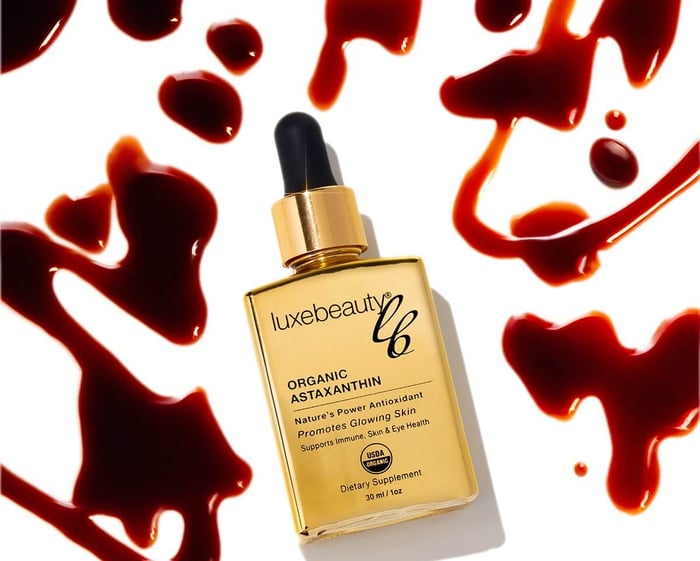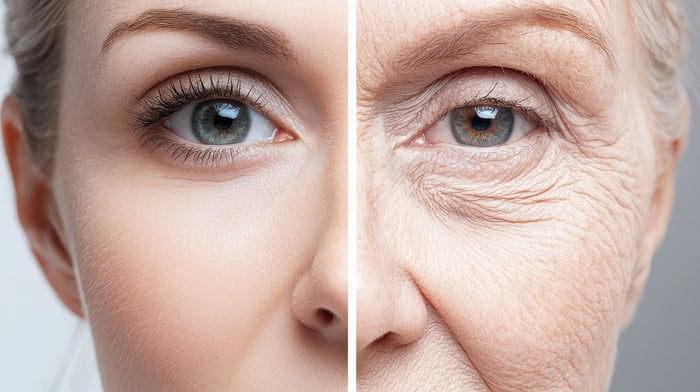What Are the Benefits of Taking Organic Astaxanthin Internally and Using It Topically?
Astaxanthin is often called the “king of antioxidants”—and for good reason. This vibrant red carotenoid does far more than fight free radicals. When used both internally and topically, organic astaxanthin becomes a powerful ally for radiant skin, sharp cognition, strong immunity, and whole-body vitality.
But how exactly does it work? And why should you use it both ways?
Let’s dive into the science of astaxanthin, skin biology, and antioxidant synergy.
What Is Astaxanthin?
Astaxanthin is a naturally occurring carotenoid found in microalgae (Haematococcus pluvialis), wild salmon, krill, and shrimp. It’s what gives these organisms their pink-red color because they eat astaxanthin.
As a fat-soluble antioxidant, astaxanthin is uniquely capable of embedding itself in cell membranes, protecting both the inner and outer layers of the lipid bilayer. Unlike water-soluble antioxidants (like vitamin C), astaxanthin can span the entire membrane, offering broader cellular protection.
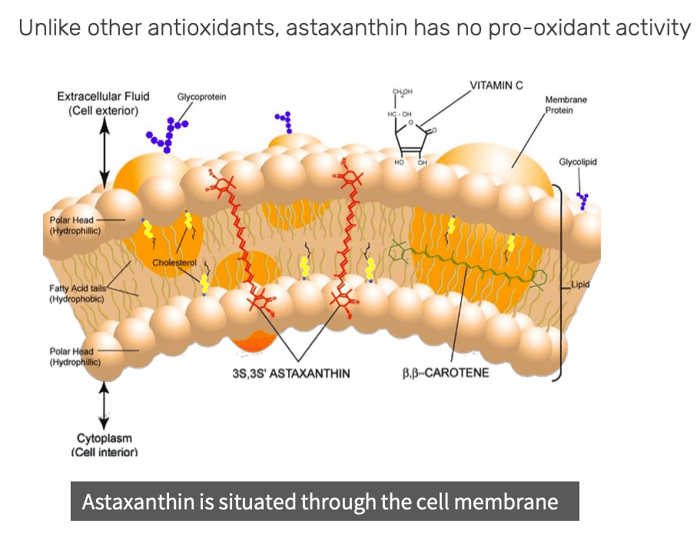
Astaxanthin is also able to cross the blood-brain and blood-retina barriers, a rare and powerful trait that allows it to support neurological and ocular health in ways many antioxidants cannot.
And here’s the best part: it doesn’t become pro-oxidant, even at higher doses, unlike some synthetic antioxidants.
Internal Benefits: How Organic Astaxanthin Supports You from Within
When taken internally as a supplement, organic astaxanthin supports the body’s endogenous antioxidant defense systems—like glutathione, superoxide dismutase (SOD), and catalase.
These are your natural detox and repair pathways. But modern life—filled with blue light, air pollution, stress, poor diet, and seed oil overload—depletes these defenses faster than your body can replenish them.
Clinical studies have shown that oral astaxanthin may:
✨ Improve skin elasticity and hydration from the inside out
🧬 Reduce oxidative stress and inflammation in cells
👁️ Support vision and eye health by protecting retinal cells
🧠 Enhance cognitive function and reduce brain fog
💪 Improve muscle recovery and endurance in athletes
🧫 Boost immune function via modulation of B cells and NK cells
In skin biology terms, it strengthens the skin’s resilience to UV and HEV light, reduces inflammatory cytokines, and preserves collagen-producing fibroblasts in the dermis.
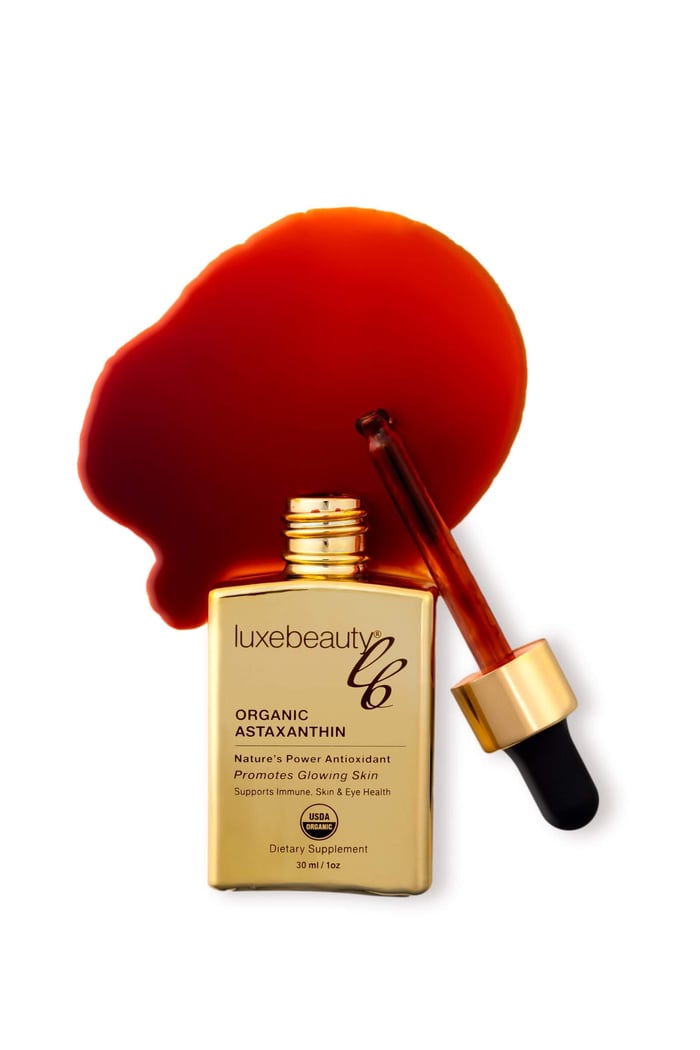
Topical Benefits: Why Astaxanthin Belongs in Skincare
Used in a face or body serum, organic astaxanthin provides direct antioxidant protection to the skin’s outermost layers (epidermis and upper dermis).
This is crucial, as your skin is your largest organ—and your first line of defense.
Topical astaxanthin has been shown to:
🛡️ Protect against UV-induced skin damage
💧 Increase moisture retention
🔄 Reduce fine lines and wrinkles
🌈 Improve skin tone and elasticity
One study published in Carotenoid Science found that astaxanthin applied topically reduced age spots, improved elasticity, and minimized fine lines in participants after just 8 weeks.
It accumulates in both the epidermis and dermis, neutralizing free radicals before they can trigger inflammation or collagen degradation.
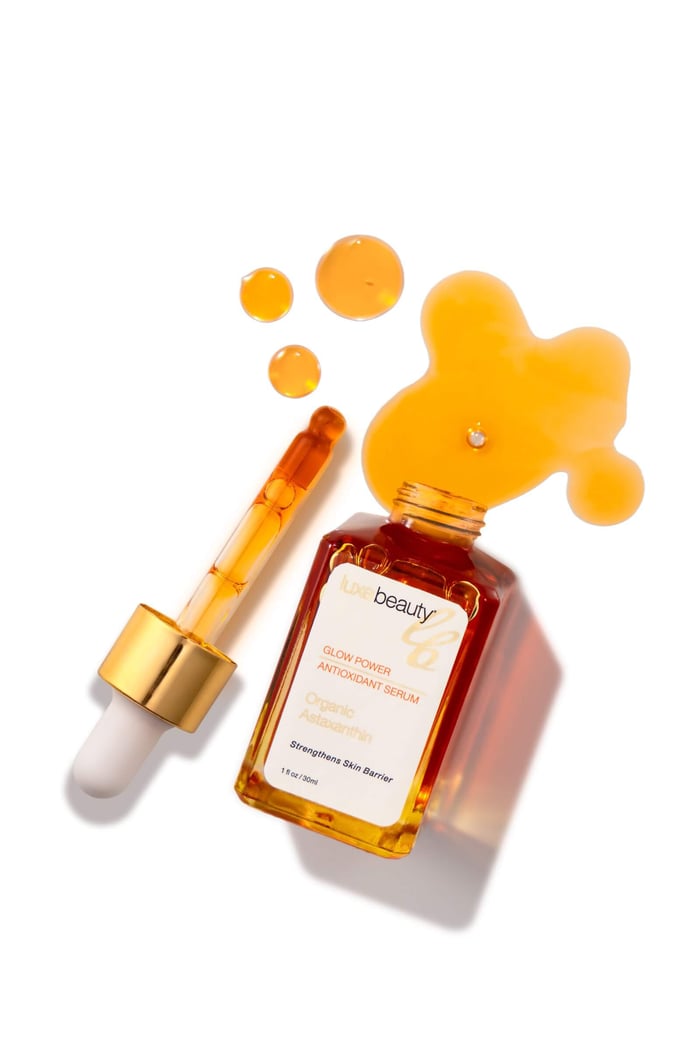
Why You Need Both: Internal + External Synergy
Think of it this way:
Topical astaxanthin = your shield from external aggressors like UV, pollution, and blue light
Oral astaxanthin = your internal reinforcements, supporting the skin’s antioxidant reserves and cellular function
Your skin’s biology relies on both.
The antioxidant defense pathway—your body’s natural mechanism to fight oxidative damage—is powered by nutrients like astaxanthin. When your internal stores are depleted, even the best topical products can’t fully repair the skin.
But when you take astaxanthin internally and apply it externally, you’re supporting:
Mitochondrial energy production
Collagen synthesis and repair
Blue light resilience
Hormonal and immune health (which both impact skin)
This dual approach also ensures long-term, sustainable results—not just surface glow.
Why Organic Matters
Not all astaxanthin is created equal.
Many brands use synthetic astaxanthin, often derived from petrochemicals or genetically modified yeast. Worse, most astaxanthin supplements are diluted in inflammatory seed oils like soybean or safflower oil—which can oxidize quickly and cause more harm than good.
Luxe Beauty’s organic astaxanthin is:
🌿 Grown using certified organic practices (no nitrates, no pesticides)
💧 Suspended in organic olive oil—not seed oils—for optimal bioavailability
🚫 Free from fillers, synthetics, or unnecessary additives
As for topical use, Luxe Beauty uses USDA certified organic astaxanthin, combined with barrier-supporting botanicals and oils that nourish the skin without clogging pores or causing imbalance.
Skin Biology 101: Antioxidants and the Epidermis
The skin is under constant assault from environmental stressors:
☀️ UVB and UVA rays
💻 Blue light (HEV light)
🧬 Free radicals from pollution, stress, and diet
This creates oxidative stress, which damages:
Skin cells
Collagen and elastin
DNA
Your body’s built-in defenses—like glutathione, catalase, and SOD—try to keep up, but modern stressors easily overwhelm them.
Astaxanthin steps in as a lipid-soluble powerhouse, stabilizing free radicals, reducing inflammation, and helping maintain the skin’s lipid barrier and moisture levels.
It’s especially effective against singlet oxygen and peroxyl radicals, which are known to accelerate photoaging.
The Luxe Beauty Philosophy
When it comes to long-term skin health, antioxidant support isn’t a trend—it’s a biological necessity.
That’s why Luxe Beauty champions both internal and external use of organic astaxanthin. From the inside, you build your skin’s strength. From the outside, you guard your glow.
Together, it’s not just skincare—it’s skin support.
Why You Need Both: Internal + Topical Astaxanthin
While each form has its strengths, topical and internal astaxanthin are synergistic when used together. 💡 Think of it like this:
Topical is your frontline defense. Internal is your deep repair and reserve. Here's why:
| Internal (Supplement) | Topical (Serum) |
|---|---|
| Works systemically across organs and tissues | Works locally on skin's surface and upper dermis |
| Supports skin, eyes, brain, and immunity | Targets visible aging, oxidative stress, pigmentation |
| Replenishes endogenous antioxidant reserves | Provides immediate antioxidant defense |
| Delivers sustained protection | Boosts hydration, glow, and resilience |
Cardiovascular Support
Fassett RG, Coombes JS. Astaxanthin: a potential therapeutic agent in cardiovascular disease. Mar Drugs. 2011.
👉 https://www.ncbi.nlm.nih.gov/pmc/articles/PMC3139642/
Immune Function + Inflammation
Park JS, et al. Astaxanthin decreased oxidative stress and inflammation and enhanced immune response in humans. Nutr Metab (Lond). 2010.
👉 https://www.ncbi.nlm.nih.gov/pmc/articles/PMC3056470/
Topical Cosmetic Benefits
Tominaga K, et al. Cosmetic benefits of astaxanthin on human subjects. Acta Biochim Pol. 2012.
👉 https://pubmed.ncbi.nlm.nih.gov/22987001/
Skin Condition Improvement
Chalyk NE, et al. Effects of astaxanthin supplementation on skin condition. J Cosmet Dermatol. 2017.
👉 https://pubmed.ncbi.nlm.nih.gov/28664594/
Eye Health / Retina Protection
Nakagawa K, et al. Antioxidant effect of astaxanthin on oxidative stress in the retina. J Clin Biochem Nutr. 2004.
👉 https://www.ncbi.nlm.nih.gov/pmc/articles/PMC2270350/
Cognitive Benefits
Wu H, et al. Astaxanthin improved cognition and brain function in animal studies. Br J Nutr. 2015.
👉 https://pubmed.ncbi.nlm.nih.gov/25744133/
Male Fertility
Comhaire F, et al. Combined conventional/antioxidant "Astaxanthin" treatment for male infertility: a double blind, randomized trial. Asian J Androl. 2005.
👉 https://pubmed.ncbi.nlm.nih.gov/16065397/
Blood Pressure + Heart Protection
Hussein G, et al. Antihypertensive and cardio-protective effects of astaxanthin. Biol Pharm Bull. 2005.
👉 https://pubmed.ncbi.nlm.nih.gov/16204936/


